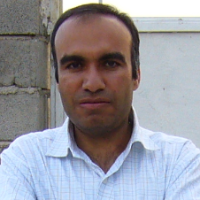Forecasting the best time series model of climatic parameters in Hirmand catchment
One of the greatest human problems in the present and future is the scarcity of water resources and the inadequate distribution of water resources. One of the important climatic elements and parameters in each region is the prediction and estimation of precipitation and temperature, and this helps planners to achieve good harvest patterns from water sources and to farmers for crop management, especially dry farming. In addition, it reduces the likelihood of irreparable damage caused by droughts and floods. Precipitation is an important source of water throughout the world, including arid and semi-arid regions. The element of precipitation is one of the most complex natural phenomena. In fact, the tangible and intangible effects are so scary that they move from an explicit legal system to a complex structure. Another important factor affecting water resources is the temperature element. Therefore, investigation and prediction of temperature in each region and catchment can be of great importance for optimal utilization of water resources, reduction of evapotranspiration, etc.The purpose of this study is to predict the precipitation and temperature in Sistan and Baluchestan province. Due to climate change and the downward trend of precipitation and increase in temperature in the region, it is attempted to predict precipitation and temperature in 13 Next year, better management of the use of water resources in the agricultural and non-agricultural sectors.
General pattern of non-seasonal and seasonal order A) Degree seasonal autoregressive process The general model of non-seasonal and seasonal order is shown in relation (1) The seasonal autoregressive pattern can be regarded as a special case of the ordinary non-seasonal autoregressive model in which the coefficients are only zero at the seasonal delays . (B) The process of the seasonally moving average of the degree Q of this process is expressed in (2):
In the present study, the Akaike criterion based on the residuals of the fitted model and the best fitted model criterion were selected from all the models for the Hirmand catchment. According to the criteria, the best model is the one that has the least value P- Value, and the highest T. The results of these criteria were identified. The SARIMA model has the least AIC and SBC value. Results of different SARIMA models of time series and criteria,P- Value, AIC ,SBC and T. Table 2 shows the catchment rainfall. For the catchment only in the model , the absolute value T of all parameters except the constant is greater than 2 and it is less than 0.05 and also has the lowest criteria AIC and SBC values, so the best model is known.Table (4) shows the comparison of different time series models for the static temperature data of the Hirmand catchment over the 18-year period (2001-2019). According to the criteria P-Value, ، ، and . the best model is the one that has the least value, and the highest. The results of these criteria were identified. The model has the least value and. Results of different models of time series and criteria ، ، and . Table (4) shows the catchment temperature. For the catchment temperature only in the model the absolute value of all parameters except the constant is more than 2 and it is less than 0.05 and also has the lowest values of criteria and, therefore, the best model is known.
In this study, the results of Lajang-Box test for the selected model of monthly temperature and precipitation of the Hirmand catchment for all delays were P-VALUE greater than 5%, which confirms the hypothesis that the residuals are uncorrelated. Also with varying degrees of freedom the test statistic is less than 5% of the kiddo table and the null hypothesis is accepted. The monthly temperature of the Hirmand basin has an increasing trend and the monthly rainfall has a decreasing trend, so planners and policymakers should apply policies to optimize water use in the region. 1- Optimal use of water resources is recommended in case of increase of temperature and decrease of bonding in the area. 2- Manage irrigation water during drought and allocate water to more essential crops and crops that have a comparative advantage. Applying the knowledge of experts in agriculture, plant breeding and climatology to adapt the type and extent of crop cultivation to climatic conditions.
- حق عضویت دریافتی صرف حمایت از نشریات عضو و نگهداری، تکمیل و توسعه مگیران میشود.
- پرداخت حق اشتراک و دانلود مقالات اجازه بازنشر آن در سایر رسانههای چاپی و دیجیتال را به کاربر نمیدهد.



